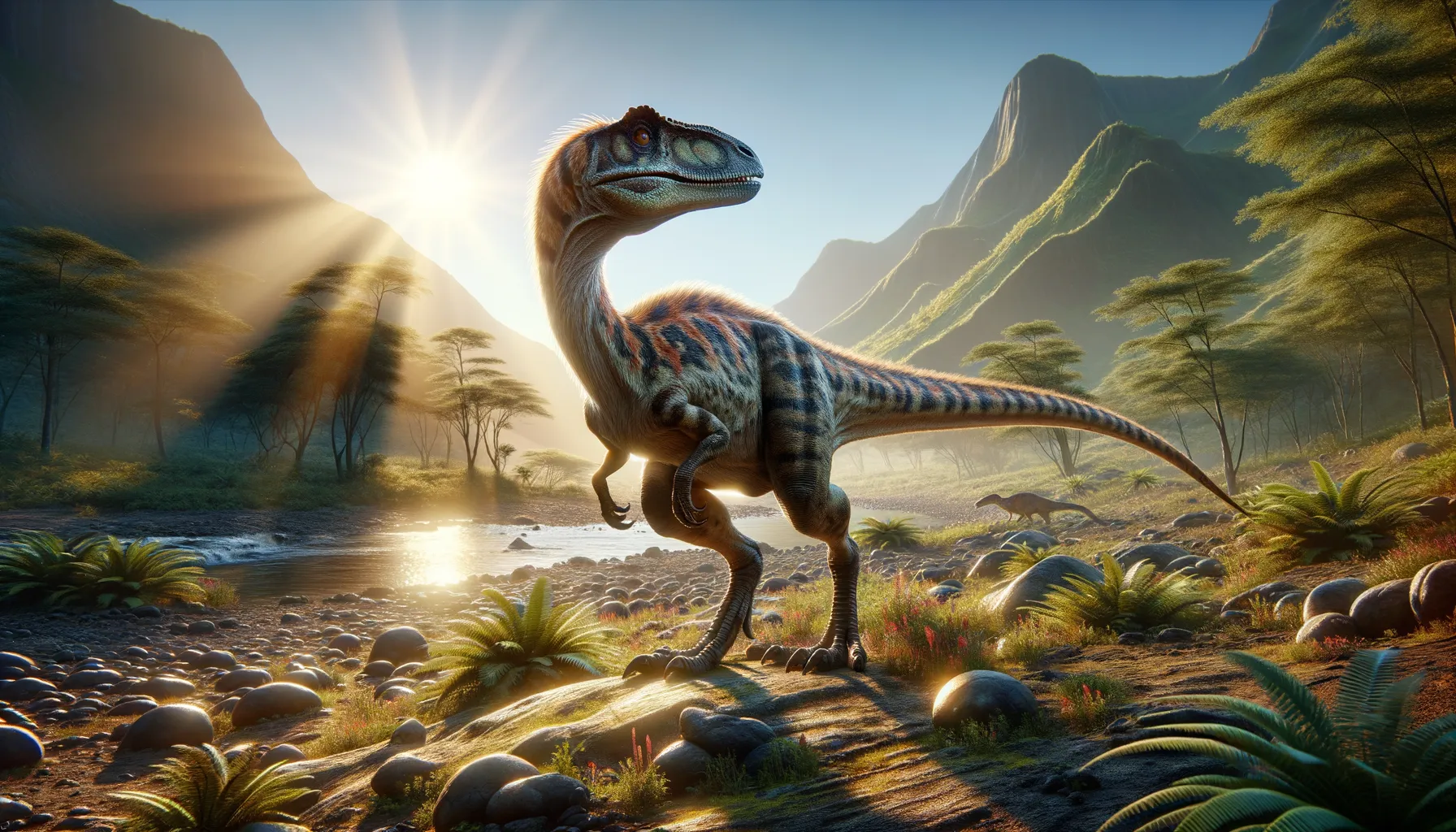
Oviraptor
Guardians of the prehistoric nests.
Period
Cretaceous
Length
About 5 to 6 feet in length.
Height
Approximately 3 feet tall at the hip.
Weight
Weighed around 66 to 88 pounds.
Oviraptor was a small, bird-like dinosaur that lived during the Late Cretaceous period. Known for its beak and lack of teeth, it was initially thought to be an egg thief, as suggested by its name. However, later discoveries indicated that it may have been a caring parent, protecting its own nest. Oviraptor had a characteristic slender body, long tail, and crest on its head.
Diet
Oviraptor's diet likely included small animals, eggs, and possibly plants. Its toothless beak suggests the capability to break eggs and maybe nuts or seeds.
Hunting
It likely hunted for small animals like lizards and insects. It may have also scavenged for eggs in other nests, considering its name and interpretations.
Environmental challenges
Oviraptor faced competition for food resources with other small dinosaurs and theropods. It lived in a semi-arid environment with seasonal water availability, impacting its food accessibility. The landscape consisted of rivers and open floodplains, which were subject to climate changes, affecting its survival strategies.
Speed
It was relatively fast for short distances.
Lifespan
Lifespan likely around 20 years in the wild.
First discovery
It was first discovered in Mongolia in 1924.
Fun Facts
- Oviraptor got its name, which means 'egg thief,' because it was originally thought to steal dinosaur eggs, but later evidence showed it was actually likely a caring parent.
- This dinosaur lived about 75 million years ago during the Late Cretaceous period.
- Oviraptor was a relatively small dinosaur, about the size of a large turkey.
- It had a toothless beak, similar to modern birds, and likely fed on a mixed diet including plants, small animals, and possibly mollusks.
- The first fossil of Oviraptor was discovered in Mongolia in 1923.
- Oviraptor had a distinctive crest on its head, which might have been used for display to attract mates.
- Its hands were well-suited for grasping and holding, possibly aiding in feeding or nest care.
Growth and Development
Oviraptor hatched from eggs and likely grew rapidly in its early years to enhance survival. Juvenile Oviraptors might have stayed in familial groups for protection and learning vital survival skills. Their body structure suggests gradual skeletal growth leading to agile movement.
Habitat
Oviraptor inhabited areas characterized by dry, riverine systems. Their environment included dense vegetative covers for nesting and feeding. They chose nesting grounds with materials available for building protective structures.
Interaction with other species
This dinosaur likely interacted competitively with other small theropods and herbivores. It might have also had predator-prey dynamics with larger dinosaurs. Defensive adaptations could include social behaviors to ward off threats.
Natural lifespan
Could live up to 20 years if environmental factors allowed.
Reproduction
Oviraptor is known for nesting behavior and might have cared for its young. Fossil nests suggest it laid multiple eggs, possibly arranging them carefully in nests. Parental care might have been significant to ensure offspring survival.
Social behaviour
Oviraptors may have been somewhat social, living in small groups or pairs. Social structures could have evolved to enhance nesting success and protection. Evidence suggests possible cooperative behavior in nesting and raising young.
Fossil locations
Oviraptor fossils have primarily been found in Mongolia's Djadokhta formation. Additional fossils have been uncovered in Inner Mongolia, China. These regions provide crucial insights into its range and environmental preferences.
